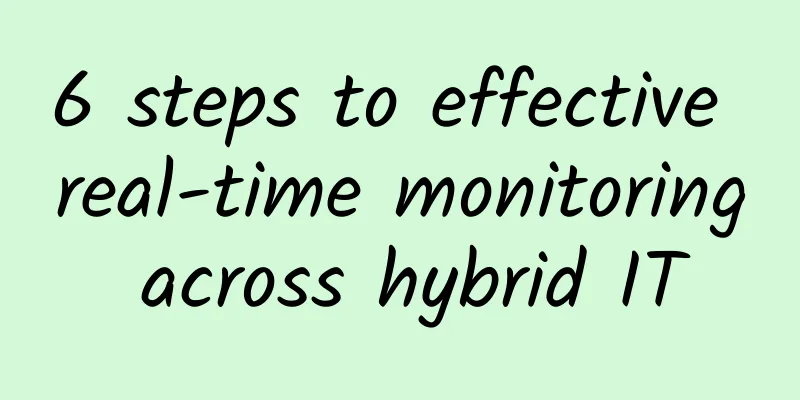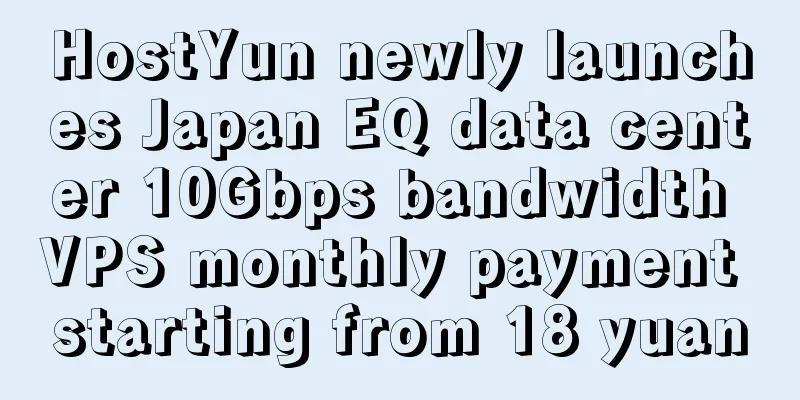6 steps to effective real-time monitoring across hybrid IT

|
For data center operations, it can be difficult to determine which data is critical and which is background noise. The ability to sift through data is critical because data center managers must quickly determine which alerts are critical and which can help provide information about how their infrastructure is performing. In their presentation “Real-time Environmental Monitoring for Your Data Center Management Platforms and Getting Common Data Into Your New Hybrid World” at Data Center World 2020, Andrew Graham, director of data center solutions at Critical Environments Group, and Cam Rogers, director of international and western sales at RLE Technologies, presented a framework that can help enterprises set up real-time monitoring in hybrid environments to effectively manage and scale infrastructure. To successfully deploy real-time monitoring, IT teams should address five questions: who, what, when, where, why, and how. 1. Understand why real-time monitoring is needed Before IT teams invest in any type of real-time monitoring, they should figure out why they need real-time monitoring in their data center. Potential reasons include reducing costs, increasing productivity, simplifying management, and reducing surprises and downtime. These reasons are particularly compelling as enterprises try to expand their infrastructure beyond local data centers and incorporate colocation and edge as part of their overall infrastructure. As hybrid IT continues to evolve, enterprises that operate their own data centers are finding that capacity management becomes a huge issue, Graham said. Originally developed to provide a snapshot of data center infrastructure, real-time monitoring technology is well suited to helping IT teams manage data centers more efficiently and help troubleshoot increasingly complex setups—ones that involve multiple technology types. “Real-time monitoring has come a long way; it’s always been there,” said Rajan Battish, principal at RSP Architects. “What we’ve seen over the years is that they’re taking information at the rack level and trying to optimize it through the infrastructure. Monitoring systems start taking data about what’s going on in the data center, and it becomes a way to automate and optimize.” 2. Determine who must participate As IT teams build the business use case, they must consider who should be involved in the new real-time monitoring setup. This includes who problems must be reported to, to whom the system should provide timely information, who is concerned about facility conditions, which personnel are responsible for the rollout of new applications, and which teams are concerned with process improvement and effectiveness. If the enterprise has off-premises infrastructure, administrators must account for any external parties that may require reporting, such as managed service providers, colocation and cloud providers, partners, and suppliers. It is important for IT teams to establish key stakeholders as doing so will impact reporting structure and software alerts. This can also reduce redundancy in reporting. "Each stakeholder has different priorities," Rogers said. "IT managers may have different needs than facilities managers. They should decide what is important and what is less important." He added that companies can start with localized alerts that don’t necessarily connect to everything. “Unless you have staff working 24/7, problems can escalate very quickly when you can’t see the alerts,” he said. “You need to be able to see the facility and send the alerts to the right people.” 3. See what the most useful metrics are Enterprises have a lot of data to track - especially when it comes to infrastructure. With a real-time monitoring setup, managers should determine which metrics are important to them and which ones can provide information quickly. “It really depends on what assets you want to manage and pool,” Rogers said. Most organizations rely on common metrics such as power usage effectiveness (PUE), data center infrastructure efficiency (DCIE), energy reduction and IT equipment utilization. But administrators should treat these metrics with caution. PUE is a widely used metric, but it is based on an overall estimate of IT facility power and total equipment power. If the team makes IT upgrades, PUE may go up. Graham recommends that IT administrators use PUE as an internal metric rather than trying to compare it to other data centers outside the enterprise. Graham and Rogers explained that managers can use other metrics beyond PUE and DCIE, such as cooling metrics, but these metrics may require more data and analysis, leading to lower deployment rates. 4. Determine when to deploy monitoring or expand capacity It can be difficult to decide when to add capacity or system applications, especially as IT needs continue to change. Your team should consider whether your monitoring and management tools can help with the planning, scheduling, and performance of internal development and improvements. "You can't just think about when you need to have devices available and running to roll out an application," Graham said. "You need to work from the go-live date to cover all the resources needed for every step in the deployment process." Real-time monitoring can also help with day-to-day work through metrics for specific events: when the event occurred, when it was reported, and when it was resolved. Identifying these times can help organizations be more proactive in responding to incidents, especially if these instances show patterns that change over time or occur regularly at specific intervals. 5. Know where your infrastructure is located Enterprises should also consider where they should deploy monitoring software and hardware - whether in local data centers, offsite at edge nodes or in colocation locations. From an internal perspective, there should be continuous processes in place to track capacity and connected devices. There is also information provided by the cloud provider, so IT teams should ask whether data can be tracked and traced in the cloud and identify any compliance requirements – documentation or dedicated applications, etc. By more accurately understanding where all data and hardware reside within an IT setup, an organization can determine which real-time monitoring product will best meet its needs and support all required technology types. This will ensure consistent performance and effective capacity management once real-time monitoring is deployed. 6. Learn how to monitor your infrastructure After IT teams, executives and stakeholders have discussed when, where and what, administrators should investigate how the enterprise can deploy real-time monitoring and increase infrastructure capacity. This involves understanding factors that may affect infrastructure growth, such as hot spots, running out of floor space, outages, lack of cooling resources and water resources, etc. Battish said most enterprises face challenges during deployment, particularly in getting the hardware and software to talk to each other. This makes convergence protocols important, as most enterprises use multiple vendors to build their data center infrastructure. However, sensors and protocol converters can help collect data and improve real-time monitoring capabilities. “There are a lot of options out there for sensors, so make sure you do your homework and don’t lock yourself into a proprietary product that doesn’t have the capability to support the features you need tomorrow and beyond,” Rogers said. Industry products include wired and wireless sensors for power distribution units and uninterruptible power supplies, as well as a range of software that companies can buy off-the-shelf or customize to meet internal needs. This combination of sensors and software can help administrators and managers reduce the number of routine remediation tasks. “It’s bad for morale when people are constantly solving the same problems,” Graham said. “We’re not saying everyone needs a single view, but they should reduce redundancy, consolidate and solve the right problems. The shift in monitoring and management allows people to be more efficient and stay ahead of the curve in our industry and focus on more optimization work.” |
<<: Huawei grandly releases the Intelligent Micro Module 5.0 solution
>>: A thread pool that novices can understand at a glance
Recommend
How should a small LAN with less than 10 or 100 people be established?
What is a local area network? The so-called local...
RackNerd: $17.88/year KVM-1.5GB/25GB/3TB/Los Angeles, Seattle, San Jose and other data centers
RackNerd is a foreign hosting company founded in ...
5G Smart Solutions: What You Should Know About Smart Cities
A smart city is a place where traditional network...
What you don’t know about blockchain is quietly subverting banks, BAT
Fintech is a phenomenal concept. With the rapid d...
802.11ax emerges, what does it bring to wireless?
In 2017, Broadcom, Qualcomm, Marvell and other ma...
Why Manufacturing is an Excellent Use Case for Edge Computing
As IoT devices become more common, edge computing...
Microsoft has scrapped plans to use IPv6 only on its internal network
[[244105]] Microsoft has scrapped plans to use on...
5 things you should know about monitoring tools
Does your IT team have too much data and not enou...
Zhang Xuezhi from the Ministry of Industry and Information Technology: We will continue to support all parties in the industry to jointly promote the development of 5G applications
[[411408]] From July 13 to 15, the 2021 China Int...
Alipay responds to mobile phone black market: facial recognition has not been broken
Recently, an article has attracted attention and ...
RAKsmart: 35% off all VPS hosting, monthly payment starting from $1.95, CN2/AS9929 available in US/Japan/Korea/Hong Kong/Germany data centers
RAKsmart provides VPS hosts with 35% discount and...
The AI dual competitions will enter the final round in August. Huawei invites you to witness the birth of the champions of the DIGIX Geek Artificial Intelligence Campus Innovation Competition and the Algorithm Elite Competition!
[51CTO.com original article] This summer, two eve...
Analyzing the core technology behind 5G: beamforming
Virtual reality, drones, and autonomous driving, ...









